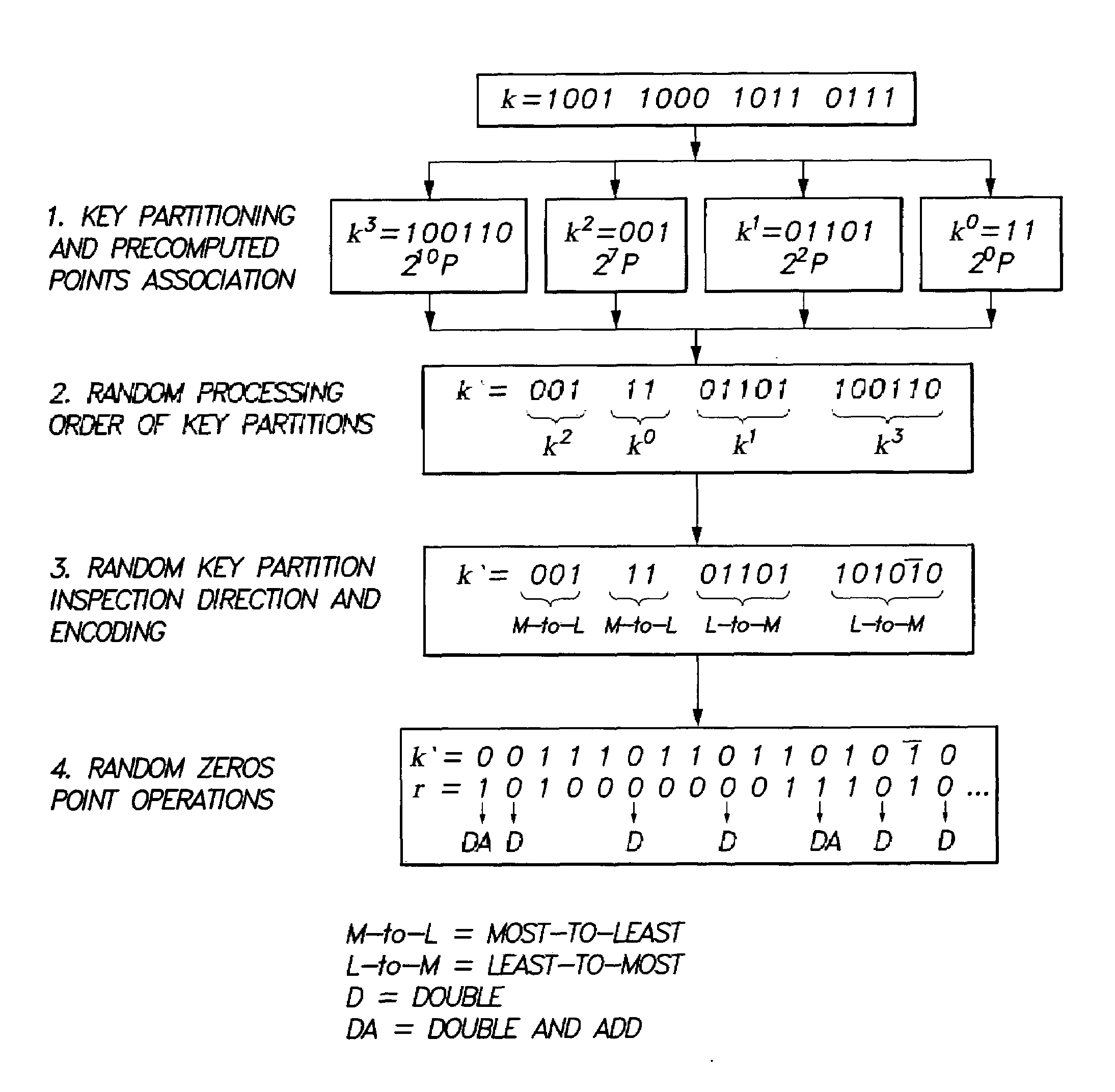Method for elliptic curve scalar multiplication
a scalar multiplication and curve technology, applied in the field of elliptic curve scalar multiplication, can solve the problems of power analysis attacks on such devices, no significant breakthroughs in determining weaknesses, and ecc to become a serious challenger to rsa and el gamal cryptosystems, so as to reduce overhead, increase the resistance to power analysis attacks, and reduce the effect of space limitation
- Summary
- Abstract
- Description
- Claims
- Application Information
AI Technical Summary
Benefits of technology
Problems solved by technology
Method used
Image
Examples
Embodiment Construction
[0047]The present invention is a method for elliptic curve scalar multiplication. The method for elliptic curve scalar multiplication may provide several countermeasures to protect scalar multiplication of a private key k by a point P to produce the product kP from power analysis attacks. First, the private key, k, is partitioned into a plurality of key partitions, which are processed in a random order, the resulting points being accumulated to produce the scalar product kP. Second, in each partition, the encoding is randomly selected to occur in binary form or in Non-Adjacent Form (NAF). Third, for binary encoded partitions, the direction of bit inspection is randomly assigned between most-to-least and least-to-most. Fourth, in each partition, each zero in the key may randomly perform a dummy point addition operation in addition to the doubling operation. The method may be implemented in software on a computer, or in smart cards, circuits, processors, telephones, or application spe...
PUM
 Login to View More
Login to View More Abstract
Description
Claims
Application Information
 Login to View More
Login to View More - R&D
- Intellectual Property
- Life Sciences
- Materials
- Tech Scout
- Unparalleled Data Quality
- Higher Quality Content
- 60% Fewer Hallucinations
Browse by: Latest US Patents, China's latest patents, Technical Efficacy Thesaurus, Application Domain, Technology Topic, Popular Technical Reports.
© 2025 PatSnap. All rights reserved.Legal|Privacy policy|Modern Slavery Act Transparency Statement|Sitemap|About US| Contact US: help@patsnap.com



